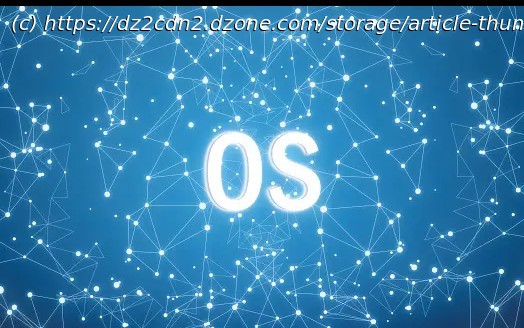This article explains the differences between paid and open-source operating systems, providing an overview of their evolution and available options.
Operating systems (OS) are the foundation of computers, allowing people to communicate with devices and administer software. From the dawn of computers to the present day, a multitude of operating systems and distributions have emerged to meet the different demands and tastes of users.History of Operating SystemsEarly Beginnings of Operating Systems
The genesis of operating systems dates back to the emergence of large-scale computers in the 1950s and 1960s. These early computing machines, known as mainframes, required a system to manage their hardware resources efficiently.Batch Processing Systems
One of the earliest operating systems was developed for the UNIVAC I (Universal Automatic Computer I) in the early 1950s. This system introduced the concept of batch processing, where users submitted jobs to be processed sequentially by the computer. This approach aimed to streamline computations by grouping similar tasks for efficient execution.Single-User Systems and the Rise of Time-Sharing
The transition from batch processing to single-user systems occurred as computing technology progressed. Operating systems like IBM’s OS/360 and Burroughs MCP (Master Control Program) emerged, providing users with direct interaction with the computer through terminals.
This era also witnessed the evolution of time-sharing systems, allowing multiple users to access a computer simultaneously. The iconic CTSS (Compatible Time-Sharing System) developed at MIT pioneered this concept in the early 1960s, enabling efficient resource allocation among users.The Birth of UNIX
Amidst these developments, in the late 1960s and early 1970s, the UNIX operating system was conceived at AT&T Bell Labs. UNIX introduced revolutionary concepts like a hierarchical file system, multitasking, and a shell for user interaction. Its modular design and portability laid the groundwork for modern operating systems.Impact and Legacy
These early operating systems laid the foundation for subsequent innovations, shaping the way computers interacted with users and managed resources. Concepts such as multitasking, time-sharing, and file system structures introduced during this period continue to influence modern computing environments.Evolution and Milestones of Operating Systems
The evolution of operating systems has been a dynamic journey shaped by technological advancements and the quest for more efficient and user-friendly computing experiences.Early Beginnings: Batch Processing Systems
In the 1950s and 1960s, the computing landscape was dominated by mainframe computers requiring batch-processing systems. Like the UNIVAC I, these systems processed tasks in batches, allowing users to submit jobs for sequential execution. However, these early systems needed more user interaction, operating in a batch-oriented manner with limited direct human intervention.Transition to Single-User Systems and Time-Sharing
The shift from batch processing to single-user systems marked a significant evolution in operating systems. IBM’s OS/360 and Burroughs MCP introduced direct interaction between users and computers via terminals, enabling real-time computing experiences. Additionally, the groundbreaking Compatible Time-Sharing System (CTSS) pioneered at MIT in the early 1960s facilitated time-sharing, enabling multiple users to access a single computer simultaneously.Emergence of UNIX and its Impact
In the late 1960s and early 1970s, AT&T Bell Labs introduced UNIX, a groundbreaking operating system. UNIX brought forth novel concepts such as a hierarchical file system, multitasking, and a shell for user interaction. Its modular design and portability made it influential, serving as the basis for subsequent operating systems and inspiring the development of diverse UNIX-like systems.Microsoft Windows: Revolutionizing Personal Computing
The advent of Microsoft Windows in the mid-1980s marked a pivotal moment in computing history. Initially built on top of MS-DOS, Windows introduced a graphical user interface (GUI), significantly enhancing user-friendliness and accessibility. Windows 1.0 laid the foundation for subsequent versions, leading to the widespread adoption of personal computers and establishing Microsoft as a dominant player in the OS market.MacOS: Apple’s Vision of User Experience
Apple’s MacOS, introduced in the 1980s, embodied a different approach to computing. Exclusive to Apple’s hardware, MacOS prioritized a seamless user experience, incorporating innovations like the Aqua interface. Its integration with Apple’s ecosystem and emphasis on design and usability catered to a niche market seeking high-end performance and aesthetics.Linux: The Rise of Open-Source Innovation
In the 1990s, Linus Torvalds introduced Linux, an open-source operating system. Linux’s foundation in UNIX principles and its open nature attracted developers worldwide. The Linux kernel’s modularity and adaptability fueled the creation of numerous distributions (distros) tailored to diverse user preferences, leading to its widespread use in servers, embedded systems, and personal computers.Contemporary Trends and Future Prospects
The contemporary computing landscape is witnessing ongoing evolution. Concepts such as virtualization, cloud computing, containerization, and mobile OS advancements continue to shape the trajectory of operating systems, emphasizing scalability, security, and adaptability to changing technological paradigms.
Home
United States
USA — software Exploring Operating Systems and Distributions: A Comprehensive Overview






